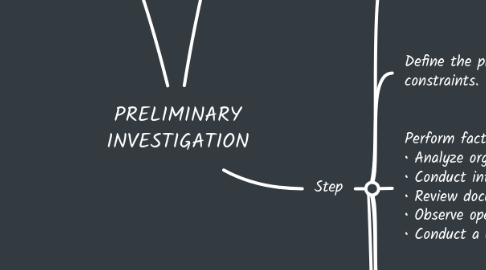
1. about
1.1. study the systems request and recommend specific action. After obtaining an authorization to proceed, the analyst interacts with managers and users
2. Step
2.1. Understand the problem or opportunity.
2.1.1. the systems request involves a new information system or a substantial change in an existing system, systems analysts might need to develop a business profile that describes business processes and functions
2.2. Define the project scope and constraints.
2.2.1. the project scope means defining the specific boundaries, or extent, of the project.
2.3. Perform fact-finding. • Analyze organizational charts. • Conduct interviews. • Review documentation. • Observe operations. • Conduct a user survey.
2.3.1. The objective of fact-finding is to gather data about project usability, costs, benefits, and schedules
2.4. Analyze project usability, cost, benefit, and schedule data.
2.4.1. During fact-finding, you gathered data about the project’s predicted costs, anticipated benefits, and schedule issues that could affect implementation
2.5. Evaluate feasibility • Operational • Technical • Economic • Schedule
2.5.1. analyzed the problem or opportunity, defined the project scope and constraints, and performed fact-finding to evaluate project usability, costs, benefits, and time constraints
2.6. Present results and recommendations to management.
2.6.1. Find that no action is necessary or some other strategy, such as additional training, is needed. To solve a minor problem, you might implement a simple solution without performing further analysis.
